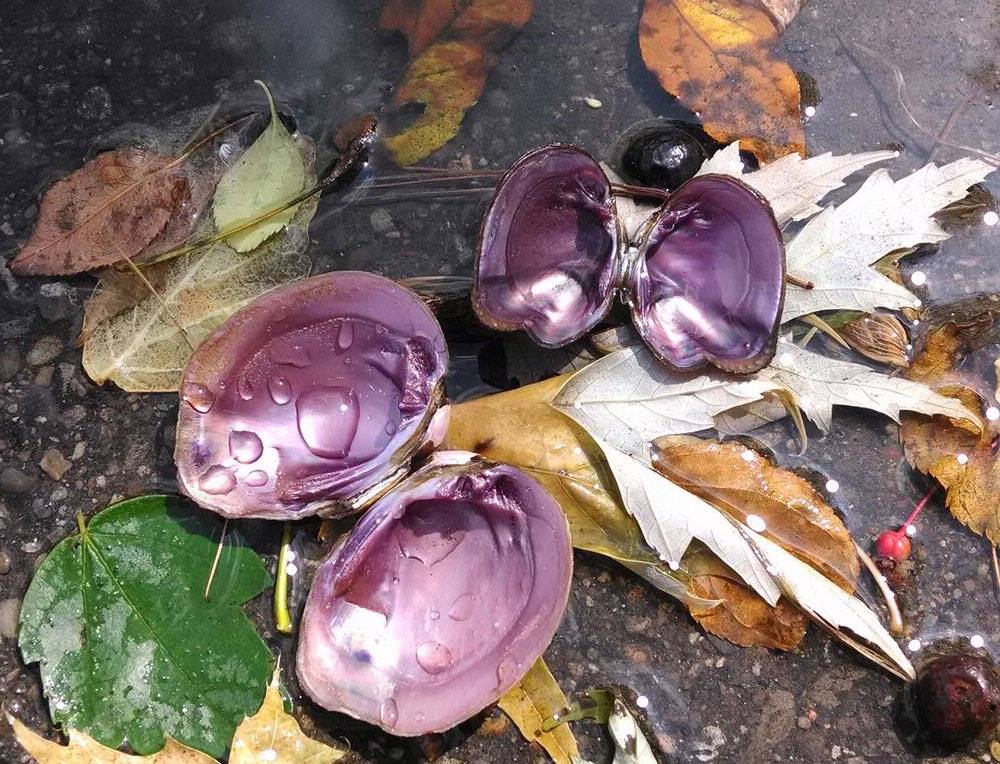Epioblasma Obliquata on:
[Wikipedia]
[Google]
[Amazon]
''Epioblasma obliquata'', commonly called the catspaw, is a
/ref> Both subspecies, the white catspaw and the purple catspaw, are critically endangered. By the time ''E. obliquata obliquata'', the purple catspaw, was listed in 1990 under the Endangered Species Act, no surviving breeding populations were known. This changed in 1994 when a few young individuals were found in Killbuck Creek, The status of subspecies ''E. obliquata perobliqua'', the white catspaw, is more dire. Only a single population has persisted into the modern day, found in Fish Creek, a tributary of the St. Joseph River in
The status of subspecies ''E. obliquata perobliqua'', the white catspaw, is more dire. Only a single population has persisted into the modern day, found in Fish Creek, a tributary of the St. Joseph River in
species
In biology, a species is the basic unit of classification and a taxonomic rank of an organism, as well as a unit of biodiversity. A species is often defined as the largest group of organisms in which any two individuals of the appropriate s ...
of freshwater mussel
Freshwater bivalves are one kind of freshwater mollusc, along with freshwater snails. They are bivalves that live in fresh water as opposed to salt water, which is the main habitat type for bivalves.
The majority of species of bivalve molluscs ...
. It is native to eastern North America, where it is classified as endangered under the Endangered Species Act.
Natural history and conservation
This species was historically widespread in the Ohio River andGreat Lakes
The Great Lakes, also called the Great Lakes of North America, are a series of large interconnected freshwater lakes in the mid-east region of North America that connect to the Atlantic Ocean via the Saint Lawrence River. There are five lak ...
drainage basins. Like many other North American freshwater mussels, it relies on a habitat of shallow, gravelly riffle zones in larger rivers. This oxygen-rich habitat has largely been destroyed over the past 200 years by dam construction and dredging, which caused a massive population decline.NatureServe/ref> Both subspecies, the white catspaw and the purple catspaw, are critically endangered. By the time ''E. obliquata obliquata'', the purple catspaw, was listed in 1990 under the Endangered Species Act, no surviving breeding populations were known. This changed in 1994 when a few young individuals were found in Killbuck Creek,
Ohio
Ohio () is a state in the Midwestern region of the United States. Of the fifty U.S. states, it is the 34th-largest by area, and with a population of nearly 11.8 million, is the seventh-most populous and tenth-most densely populated. The sta ...
, indicating a small breeding population. An attempt to collect young individuals was made in order to start a captive breeding program. However, to the researchers disappointment, surveys from 2006–2007 recorded a population of only 12 males and zero females. It wasn't until 2012 that researchers were able to find their first female individuals that could be used for captive breeding programs, which are now underway.
 The status of subspecies ''E. obliquata perobliqua'', the white catspaw, is more dire. Only a single population has persisted into the modern day, found in Fish Creek, a tributary of the St. Joseph River in
The status of subspecies ''E. obliquata perobliqua'', the white catspaw, is more dire. Only a single population has persisted into the modern day, found in Fish Creek, a tributary of the St. Joseph River in Indiana
Indiana () is a U.S. state in the Midwestern United States. It is the 38th-largest by area and the 17th-most populous of the 50 States. Its capital and largest city is Indianapolis. Indiana was admitted to the United States as the 19th s ...
. At this location, only five living individuals were documented during surveys from 1975 to 1999, with the last living female recorded in 1975. Since then, surveys of Fish Creek have failed to find any living white catspaw mussels.
Taxonomy
This species exhibits variable shell characteristics, which have been taxonomically treated as either subspecies or separate species. Citing phylogeny, shell characteristics and allopatry, the Fish and Wildlife Service, supported by Williams et al. (2017), has separated the purple and white catspaws into distinct species, each protected by the Endangered Species Act as an endangered species. * Purple catspaw (''Epioblasma obliquata obliquata''), now protected federally as ''Epioblasma obliquata'' * White catspaw (''Epioblasma obliquata perobliqua''), now protected federally as ''Epioblasma perobliqua'' (Conrad, 1836)References
{{Taxonbar, from=Q3790538 obliquata ESA endangered species Taxa named by Constantine Samuel Rafinesque